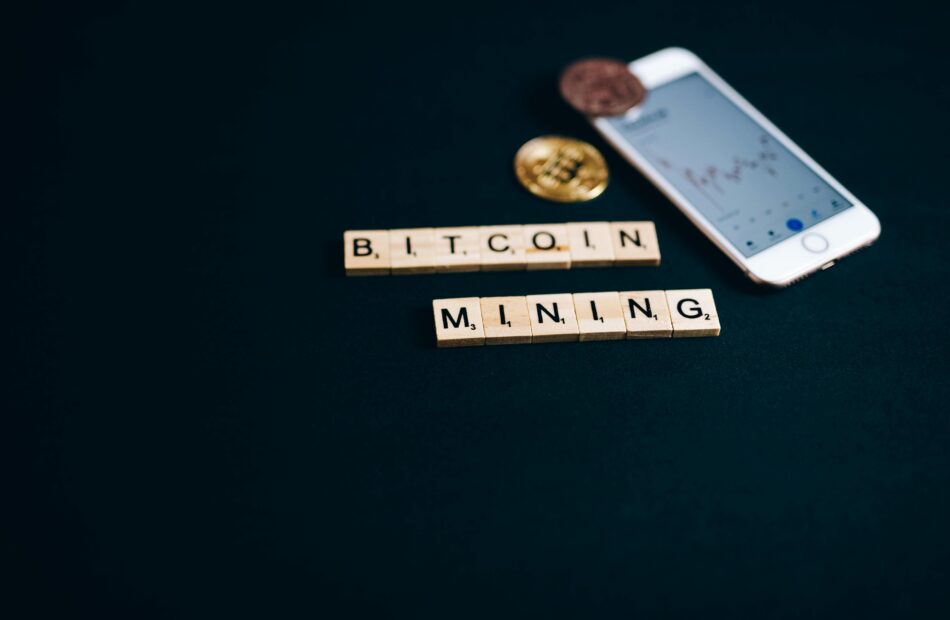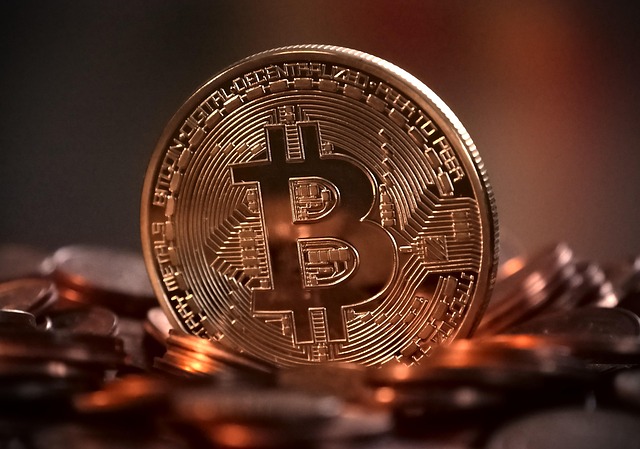Nakamoto coefficient explained: Measuring decentralization in blockchain networks
Measuring decentralization in blockchain Decentralization involves spreading control and decision-making across a network instead of a single authority. Unlike centralized systems, where one entity controls everything, decentralized blockchains distribute data among participants (nodes). Each node holds a copy of the ledger, ensuring transparency and reducing the risk of manipulation or system failure.In blockchain, a decentralized network provides significant advantages:Security: Decentralization reduces vulnerabilities associated with central points of attack. Without a single controlling entity, malicious actors find it more challenging to compromise the network. Transparency: All transactions are recorded on a public ledger accessible to all participants, fostering trust through transparency. This openness ensures that no single entity can manipulate data without consensus. Fault tolerance: Decentralized networks are more resilient to failures. Data distribution across multiple nodes ensures that the system remains operational even if some nodes fail. So, decentralization is good, but it’s not a fixed state. It’s more of a spectrum, constantly shifting as network participation, governance structures and consensus mechanisms evolve.And yes, there’s a ruler for that. It’s called the Nakamoto coefficient. What is the Nakamoto coefficient? The Nakamoto coefficient is a metric used to quantify the decentralization of a blockchain network. It represents the minimum number of independent entities — such as validators, miners or node operators — that would need to collude to disrupt or compromise the network’s normal operation. This concept was introduced in 2017 by former Coinbase chief technology officer Balaji Srinivasan and was named after Bitcoin’s creator, Satoshi Nakamoto. A higher Nakamoto coefficient indicates greater decentralization and security within the blockchain network. In such networks, control is more widely distributed among participants, making it more challenging for any small group to manipulate or attack the system. Conversely, a lower Nakamoto coefficient suggests fewer entities hold significant control, increasing the risk of centralization and potential vulnerabilities. For example, a blockchain with a Nakamoto coefficient of 1 would be highly centralized, as a single entity could control the network. In contrast, a network with a coefficient of 10 would require at least 10 independent entities to collude to exert control, reflecting a more decentralized and secure structure.Did you know? Polkadot’s high score on the Nakamoto coefficient is largely due to Polkadot’s nominated proof-of-stake (NPoS) consensus mechanism, which promotes an even distribution of stakes among a large number of validators. Calculating the Nakamoto coefficient Calculating this coefficient involves several key steps:Identification of key entities: First, determine the primary actors within the network, such as mining pools, validators, node operators or stakeholders. These entities play significant roles in maintaining the network’s operations and security.Assessment of each entity’s control: Next, evaluate the extent of control each identified entity has over the network’s resources. For instance, in proof-of-work (PoW) blockchains like Bitcoin, this involves analyzing the hashrate distribution among mining pools. In proof-of-stake (PoS) systems it requires examining the stake distribution among validators.Summation to determine the 51% threshold: After assessing individual controls, rank the entities from highest to lowest based on their influence. Then, cumulatively add their control percentages until the combined total exceeds 51%. The number of entities required to reach this threshold represents the Nakamoto coefficient.Consider a PoW blockchain with the following mining pool distribution:Mining pool A: 25% (of the total hashrate)Mining pool B: 20%Mining pool C: 15%Mining pool D: 10%Others: 30%To determine the Nakamoto coefficient:Start with mining pool A (25%).Add mining pool B (25% 20% = 45%).Add mining pool C (45% 15% = 60%).In this scenario, the combined hashrate of mining pools A, B and C reaches 60%, surpassing the 51% threshold. Therefore, the Nakamoto coefficient is 3, indicating that collusion among these three entities could compromise the network’s integrity. Did you know? Despite Bitcoin’s reputation for decentralization, its mining subsystem is notably centralized. The Nakamoto coefficient is currently 2 for Bitcoin. This means that just two mining pools control most of Bitcoin’s mining power. Limitations of the Nakamoto coefficient While the Nakamoto coefficient serves as a valuable metric for assessing blockchain decentralization, it possesses certain limitations that warrant careful consideration. For example: Static snapshotThe Nakamoto coefficient provides a static snapshot of decentralization, reflecting the minimum number of entities required to compromise a network at a specific point in time. However, blockchain networks are dynamic, with participant roles and influence evolving due to factors like staking, mining power shifts or node participation changes. Consequently, the coefficient may not accurately capture these temporal fluctuations, potentially leading to outdated or misleading assessments. Subsystem focusThis metric typically focuses on specific subsystems, such as validators or mining pools, potentially overlooking other critical aspects of decentralization. Factors like client software diversity, geographical distribution of nodes and token ownership concentration also significantly impact a network’s decentralization and security. Relying solely on the Nakamoto coefficient might result in an incomplete evaluation.Consensus mechanism variationsDifferent blockchain networks employ various consensus mechanisms, each influencing decentralization differently. The Nakamoto coefficient may not uniformly apply across these diverse systems, necessitating tailored approaches for accurate measurement. External InfluencesExternal factors, including regulatory actions, technological advancements or market dynamics, can influence decentralization over time. For example, regulatory policies in specific regions might affect the operation of nodes or mining facilities, thereby altering the network’s decentralization landscape. The Nakamoto coefficient may not account for such externalities, limiting its comprehensiveness.To sum up, the Nakamoto coefficient is useful for assessing certain aspects of blockchain decentralization. It should be used alongside other metrics and qualitative assessments to gain a comprehensive understanding of a network’s decentralization and security.
7-Eleven South Korea to accept CBDC payments in national pilot program
South Korea’s 7-Eleven stores will accept payments in the country’s central bank digital currency (CBDC) until June, as the retailer participates in the test phase of its CBDC project. The convenience store chain will reportedly provide a 10% discount on all products paid for with CBDC during the test period. According to Moon Dae-woo, head of 7-Eleven’s digital innovation division, the company is making an effort to incorporate digital technology advancements in its operations. The executive added that the company’s participation in the CBDC test will help accelerate the firm’s digital transformation. Many stores will participate in South Korea’s CBDC testing phase, which runs from April 1 to June 30. The project also involves 100,000 participants who will be allowed to test payments using CBDC issued by the central bank. Central bank digital currencies are digital assets issued by government agencies. Like other digital assets, CBDCs offer faster and more modernized payment features. However, unlike Bitcoin and other privacy-focused tokens that offer certain levels of anonymity, CBDCs are controlled and monitored by governments. Related: Over 400 South Korean officials disclose $9.8M in crypto holdingsSouth Korea tests CBDC from April to JuneOn March 24, government agencies including the Bank of Korea, the Financial Services Commission (FSC) and the Financial Supervisory Service (FSS) announced the CBDC test. Participants can convert their bank deposits into tokens stored in a distributed ledger during the test period. The tokens hold the same value as the Korean won.The government agencies said citizens aged 19 or older with a deposit account in a participating bank could apply to take part. Registrations were limited to 100,000 participants. KB, Koomin, Shinhan, Hana, Woori, NongHyup, IBK and Busan are among the banks participating in the CBDC tests. Apart from 7-Eleven, participants can use their CBDCs in coffee shops, supermarkets, K-Pop merchandise stores and delivery platforms. However, users will be limited to a total conversion limit of 5 million won ($3,416) during testing. The Bank of Korea first announced the retail CBDC testing for 100,000 users in November 2023 and was originally scheduled to begin in the fourth quarter of 2024. The FSS said the country’s CBDC test represents a step toward creating a prototype for a “future monetary system.”Magazine: Ridiculous ‘Chinese Mint’ crypto scam, Japan dives into stablecoins: Asia Express
Sony Electronics Singapore accepts USDC payments through Crypto.com
Sony Electronics Singapore, a subsidiary of the Japanese tech giant Sony, has recently announced that it will now be accepting USDC (USDC) stablecoin payments through an integration with Crypto.com. This move marks a significant step towards mainstream adoption of cryptocurrency as a means of payment for everyday goods and services.
According to Chin Tah Ang, the general manager of Crypto.com Singapore, this partnership with a well-established and forward-thinking brand like Sony Electronics Singapore will raise awareness of the simplicity and convenience of using crypto for payments. This is just one of the many high-profile partnerships that Crypto.com has been able to secure, including a recent collaboration with Deutsche Bank to provide corporate banking services across Asian-Pacific markets.
The acceptance of stablecoin payments by the Singaporean Sony subsidiary may be the start of a new trend in the region. In late February, it was reported that Metro, a publicly listed department store chain in Singapore, has enabled its customers to pay for products using stablecoins like Tether’s USDt. This follows January reports that Singapore has become a key destination for Web3 companies, issuing twice as many crypto licenses in 2020 as in the previous year.
Singapore’s approach to crypto regulation, which focuses on protecting investors and making it easy for new crypto firms to interact with local banking partners, has made it a global champion of blockchain technology. In fact, a study published at the end of 2020 ranked Singapore as the top jurisdiction for blockchain based on patents, jobs, and exchanges.
This emerging trend towards crypto adoption in Singapore is further evidenced by the efforts of the crypto-friendly digital bank Singapore Gulf Bank, which is seeking a fund injection of at least $50 million to acquire a stablecoin payments company in 2021. Additionally, a recent study revealed that Singapore is not only a leader in blockchain technology, but also in the adoption of cryptocurrency, with a high percentage of the population owning or using digital assets.
As Singapore continues to pave the way for crypto adoption and innovation, it is clear that the country is becoming a major hub for the industry. With its progressive approach to regulation and partnerships with established brands like Sony, Singapore is poised to become a leader in the global crypto landscape.
Bitcoin sales at $109K all-time high 'significantly below' cycle tops — Research
Bitcoin investors who entered the market in 2020 or later are still holding onto their BTC despite the recent surge in prices, according to new research from onchain analytics firm Glassnode. The study, published on April 1, revealed that even at a price of $110,000, many hodlers are not willing to sell.
The data, gathered from Glassnode’s Realized Cap HODL Waves metric, shows that investors who bought BTC between three and five years ago are still holding onto their coins. This group includes those who bought at the 2020 lows of $3,600 and the 2021 highs of $69,000.
While the share of wealth held by these investors has declined slightly since the peak in November 2024, it remains at historically high levels. This suggests that the majority of investors who entered the market between 2020 and 2022 are still holding onto their BTC.
In contrast, the data also shows that over two-thirds of those who bought BTC five to seven years ago have already sold their positions. This reflects their lower cost basis compared to the more recent buyers.
Glassnode also noted that current short-term holders (STHs), who are more speculative investors, have been more sensitive to recent price volatility. However, their participation in the market does not suggest a speculative frenzy, as seen in previous BTC price cycles.
The data shows that STHs currently hold around 40% of Bitcoin’s network wealth, which is significantly lower than previous cycle tops where new investor wealth peaked at 70-90%. This indicates a more tempered and distributed bull market so far.
Overall, the data suggests that Bitcoin investors are holding onto their coins for the long term, even as prices continue to rise. This is in contrast to previous cycles where investors were more likely to sell at higher prices.
It’s important to note that this article does not contain investment advice or recommendations. Every investment and trading move involves risk, and readers should conduct their own research before making any decisions.
Crypto PAC-backed Republicans win US House seats in Florida special elections
Two Republicans who received a combined $1.5 million from the crypto-backed political action committee (PAC) Fairshake will enter the US House after winning special elections in Florida.Republican Jimmy Patronis won the vacant seat in Florida’s 1st Congressional District to replace Matt Gaetz, taking 57% of the vote to defeat Democrat Gay Valimont, according to AP News data.Randy Fine also took Florida’s 6th Congressional District with 56.7% of the vote to beat his Democratic rival, public school teacher Josh Weil, and fill a seat left vacant by Mike Waltz, who took a job as White House national security adviser.Florida’s 1st and 6th Congressional Districts — located in Florida’s western panhandle and along the state’s northeast coast — have been controlled by Republicans for roughly 30 years, but their lead has narrowed in recent years.Fairshake, a PAC backed by crypto industry giants including Coinbase, Ripple and Andreessen Horowitz, gave Fine around $1.16 million in advertising spending and funneled $347,000 to Patronis to support his campaign.Both Republicans have expressed support for the crypto industry, with Fine stating in a Jan. 14 X post that “Floridians want crypto innovation!”Source: Randy FineFairshake and its affiliates poured around $170 million into the 2024 US presidential and congressional elections to back candidates who committed to supporting the crypto industry.The wins by Patronis and Fine increased Republican representation in the House to 220 seats, with the Democrats holding 213 seats.There are two vacant seats to be filled after Texas and Arizona Democrats Sylvester Turner and Raúl Grijalva died on March 5 and March 13, respectively.Florida can expect to see a crypto-friendly regulatory environment The victories for Patronis and Fine likely mean that crypto legislation will continue to see support in the US capital.The Republican Party would have maintained its House majority even if it lost both seats in Florida, but it would have made it more difficult for some of the recently introduced Republican-backed crypto bills to pass through the House and Senate.Related: Florida bill proposes strict rules against online gamblingAt the Digital Assets Summit on March 18, Democratic Congressman Ro Khanna said he believes Congress “should be able to get” both a stablecoin and crypto market structure bill done this year.Bills that could eventually make their way to the House include the Guiding and Establishing National Innovation for US Stablecoins (GENIUS) Act, which passed the Senate Banking Committee in an 18-6 vote on March 13. Senator Cynthia Lummis also reintroduced a Bitcoin reserve bill about a week after the Trump administration announced the establishment of a Strategic Bitcoin Reserve on March 6, with the legislation referred to the Senate Banking Committee on March 11. Magazine: Trump’s crypto ventures raise conflict of interest, insider trading questions
SEC and Gemini ask to pause lawsuit to explore ‘potential resolution’
The US Securities and Exchange Commission (SEC) and popular cryptocurrency exchange Gemini have recently requested a pause in the regulator’s lawsuit over the exchange’s Gemini Earn program. In a joint letter to New York federal court judge Edgardo Ramos, the SEC and Gemini’s lawyers have asked for a 60-day hold on the case to explore a potential resolution.
The SEC initially filed the lawsuit against Gemini and crypto lending firm Genesis Global Capital in January 2023, alleging that they offered unregistered securities through the Gemini Earn program. While Genesis has already agreed to pay $21 million to settle the charges, the case against Gemini remains ongoing.
The recent request for a pause in the lawsuit suggests that both parties are open to finding a resolution outside of court. The lawyers representing the SEC and Gemini stated that a stay would be in the best interest of all parties involved and would also conserve judicial resources. They have proposed submitting a joint status report within 60 days after the stay is granted.
It is unclear what a potential resolution would entail, but the SEC has dropped several lawsuits against crypto companies under the Biden administration, including those against Coinbase, Ripple, and Kraken. This could be a sign of a more lenient approach towards the crypto industry from the SEC.
In February, Gemini announced that the SEC had closed a separate investigation into the firm, as the regulator winds back its crypto enforcement under President Donald Trump. This news was met with relief from Gemini co-founder Cameron Winklevoss, who stated that the SEC’s actions had cost the company millions of dollars in legal fees and lost productivity.
Other crypto companies, such as OpenSea, Crypto.com, and Uniswap, have also reported that the SEC has closed similar probes into their businesses. This trend suggests that the SEC may be shifting its focus away from strict enforcement of securities laws in the crypto space.
In the meantime, the crypto community eagerly awaits the outcome of the SEC’s lawsuit against Gemini. Will the two parties be able to reach a resolution, or will the case continue to play out in court? Only time will tell. Stay tuned for updates on this developing story.
GameStop finishes $1.5B raise to add Bitcoin to its balance sheet
Video game retailer GameStop Corporation (GME) has finished a convertible debt offering that raised $1.5 billion, with some proceeds earmarked for buying Bitcoin.The offering was initially set to raise at least $1.3 billion, but purchasers opted for an additional $200 million aggregate principal amount of notes, GameStop said in an April 1 filing with the Securities and Exchange Commission.”The company expects to use the net proceeds from the offering for general corporate purposes, including the acquisition of Bitcoin in a manner consistent with the Company’s Investment Policy,” GameStop added.The convertible notes are debt that can later be converted into equity and are scheduled to mature on April 1, 2030, unless earlier converted, redeemed or repurchased.The conversion rate for the notes will initially be 33 shares of Common Stock per $1,000 principal amount of notes, according to the filing. GameStop shares didn’t see a significant move following the close of the convertible debt offering. GME closed the April 1 trading day up 1.34% at $22.61 and only saw an extra 0.5% bump after the bell, Google Finance data shows.GameStop’s share price barely moved after sharing it closed the convertible debt offering. Source: Google FinancePositive shareholder sentiment saw the stock jump nearly 12% to $28.36 on March 26, the day after GameStop announced its Bitcoin (BTC) plan, but its fortunes reversed the next day, with GME shares dropping nearly 24% to $21.68.Analysts at the time suggested the chilly reception reflected shareholders’ fear of GameStop’s deeper problems with its business model. GameStop joins growing Bitcoin move On March 25, GameStop confirmed that it had received board approval to invest in Bitcoin and US-dollar-pegged stablecoins using the notes and its cash reserves. Those reserves stood at $4.77 billion as of Feb. 1, compared with $921.7 million a year earlier, according to its 2024 fourth-quarter financial statements. GameStop is a relative latecomer among public companies creating Bitcoin treasuries. A slew of others have already added Bitcoin to their balance sheets in a playbook popularized by Micheal Saylor’s Strategy.Related: Metaplanet adds $67M in Bitcoin following 10-to-1 stock splitThe video game retailer previously made forays into the crypto space with a crypto wallet for its users, which it eventually shut down in November 2023 due to regulatory uncertainty.GameStop is also considered the first example of meme stock success after a short squeeze in 2021 that sent the stock surging over 1,000% in a month as traders flipped the table on hedge funds that had been making money shorting on the company.Magazine: SEC’s U-turn on crypto leaves key questions unanswered
UK trade bodies ask government to make crypto a ‘strategic priority’
Several British trade associations have asked Prime Minister Keir Starmer’s office to appoint a special envoy dedicated to crypto and for a dedicated action plan for digital assets and blockchain technology.In a March 31 letter, the coalition of six UK digital economy trade bodies urged Starmer’s special adviser on business and investment, Varun Chandra, for a “greater strategic focus and alignment to deliver investment, growth and jobs” for the crypto industry. The group, which consisted of the UK Cryptoasset Business Council, Global Digital Finance, The Payments Association, Digital Currencies Governance Group, the Crypto Council for Innovation and techUK, noted the US policy shift on crypto under President Donald Trump and his appointment of a crypto czar.Britain’s commitment to an economic trade deal focused on technological cooperation with the US “presents a significant opportunity to mirror the United States’ ambition in fostering leadership in blockchain, digital assets, and other emerging financial technologies,” the letter stated. The group recommended that the UK appoint a blockchain special envoy, similar to the US, to coordinate policy, foster innovation, and position the country competitively in global markets.The trade bodies also called for the development of a dedicated government action plan for crypto and blockchain technology, including a concierge service to attract high-potential firms.They added that the government should acknowledge and leverage the commonalities between blockchain, quantum computing and artificial intelligence technologies, including potential applications for government services.Another recommendation was to create a high-level industry-government-regulator engagement forum to ensure informed decision-making and cross-sector collaboration.The UK crypto and tech associations lobbying the government for a policy shift. Source: LinkedIn“With deep pools of talent, access to capital, world-class academic institutions, and sophisticated regulators, the UK provides an environment where digital assets and blockchain innovation can thrive,” they stated. Related: UK should tax crypto buyers to boost stock investing, economy, says bankerThe coalition argues that crypto and blockchain technology could boost the UK economy by 57 billion British pounds ($73.6 billion) over the next decade, with the sector potentially increasing global gross domestic product by 1.39 trillion pounds ($1.8 trillion) by 2030.Tom Griffiths, the co-founder and managing partner of crypto compliance advisory firm BitCompli, said in response to the letter on LinkedIn that the Financial Conduct Authority “has a lot of talent and a good sight of future plans, but the UK is definitely losing pace with Dubai, Singapore, and other EU jurisdictions.”“Now is the time for the FCA to act, or the UK will lose out on this huge opportunity, which is digital assets and all the benefits this sector can bring, not only now but over the next 20 years,” he added.Magazine: Bitcoin ATH sooner than expected? XRP may drop 40%, and more: Hodler’s Digest, March 23 – 29








